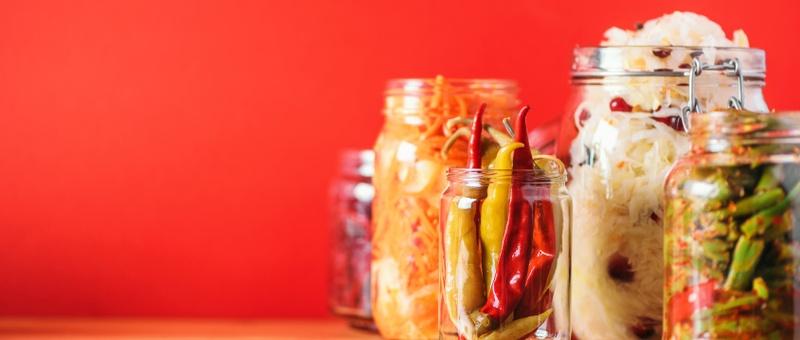
10 everyday foods high in vitamin D
Peer reviewed by Dr Colin Tidy, MRCGPAuthored by Josh AldermanOriginally published 29 Oct 2025
Erfüllt die Anforderungen des Patienten redaktionelle Richtlinien
- HerunterladenHerunterladen
- Teilen Sie
- Sprache
- Diskussion
Vitamin D plays an essential role in bone health, immunity, and mood, yet many people in the UK don’t get enough, especially during the darker months.
While sunlight is the main source, certain foods can also help to boost your levels naturally. In this article, we explore vitamin D foods you might not expect and how to include them in your diet.
In diesem Artikel:
Lesen Sie unten weiter
Why do we need vitamin D?
Vitamin D helps the body absorb calcium and phosphate, nutrients that are vital for strong bones, teeth, and muscles. A deficiency can cause fatigue, low mood, weakened immunity, and, in severe cases, bone problems such as rickets or osteoporosis.
Since the body produces vitamin D when the skin is exposed to sunlight, some people may be deficient during the autumn and winter months.
To bridge that seasonal gap, experts recommend adults consider a daily 10 micrograms (400 International Units) supplement from October through March to maintain healthy levels of this essential vitamin.¹
Alongside your daily supplement, it’s a good idea to boost your vitamin D intake through food. There are plenty of everyday sources that you might already know of - and a few that might even surprise you.
10 foods high in vitamin D

Graphic: Heather Ainsworth
Everyday foods high in vitamin D
1. Oily fish
Oily fish, are among the richest natural sources of vitamin D. Just one serving of salmon or mackerel can provide most of your daily requirement.
Sardines, whether fresh or canned, are another excellent option and supply calcium and omega-3 fatty acids.
2. Egg yolks
Eggs are a convenient and versatile way to get more vitamin D. The yolk contains most of the nutrient, so eating whole eggs rather than just the whites is best.
Vitamin D levels can vary depending on how the hens were raised, and eggs from free-range or outdoor-reared hens tend to contain more.
3. Fortified foods
In the UK, many everyday foods are fortified with vitamin D, meaning it is added during production. Common examples include:
Breakfast cereals.
Margarine and spreads.
Some plant-based milks such as soya, oat, or almond.
Fortified orange juice.
Fortified foods are particularly useful for vegetarians, vegans, or anyone who does not eat fish. Always check the label to see how much vitamin D a product contains.
4. Mushrooms exposed to sunlight
Most mushrooms contain very little vitamin D unless they have been exposed to UV light, which increases their vitamin D2 content. Look for labels that say “UV-exposed” or “vitamin D enriched”.
Leaving ordinary mushrooms on a sunny windowsill for an hour before cooking can slightly boost their vitamin D levels.
5. Liver
Beef and lamb liver are rich in several nutrients, including vitamin D, iron, and vitamin A. However, because they are high in vitamin A, they should be eaten in moderation, especially by people who are pregnant, as too much vitamin A can be harmful to the baby.
6. Cod liver oil
Cod liver oil has long been a popular supplement in the UK and is still one of the richest natural sources of vitamin D.
Just one teaspoon can give you your entire daily dose. However, because it’s also high in vitamin A, it’s best to follow the recommended dosage and avoid taking it alongside other vitamin A supplements.
7. Tinned tuna
Fresh tuna loses much of its vitamin D during cooking, but tinned tuna retains more of it. It is a convenient cupboard staple that can be added to sandwiches, salads, or pasta dishes.
Choose tuna canned in spring water rather than oil for a lighter option.
8. Cheese
Some types of cheese, particularly ricotta, contain small amounts of vitamin D, and when combined with other foods high in vitamin D, can contribute to your overall intake.
Cheese also provides calcium and protein, which support bone and muscle health.
9. Shellfish
Prawns, and oysters contain modest amounts of vitamin D, along with protein, zinc, and vitamin B12. They are also lower in fat than other animal sources, making them a healthy addition to a balanced diet.
10. Fortified plant-based alternatives
For those following a vegan diet, fortified plant-based milks, yoghurts, and spreads are among the most reliable vitamin D foods.
They usually contain vitamin D2, though some brands now add D3 derived from lichen2, which is suitable for vegans and thought to be more effective.
Lesen Sie unten weiter
Getting enough vitamin D
It can be difficult to meet your vitamin D needs through food alone, even with a varied diet. This is why supplementation is sometimes recommended, particularly during the winter months or for people at higher risk of deficiency, including those who rarely go outdoors or have darker skin tones.
If you are unsure whether you need a supplement, speak to your doctor or pharmacist. They may recommend a simple blood test to check your levels.
Zusammenfassung
Although sunlight is the main source of vitamin D, certain foods high in vitamin D, such as oily fish, fortified products, and eggs, can make a valuable contribution.
For most people, combining these foods with a daily supplement during the winter offers the best protection against deficiency. Always make sure to stick to the recommended intake to avoid vitamin D toxicity.
Keeping your vitamin D levels healthy supports not only bones and muscles but also your immune system and overall wellbeing.
Lesen Sie unten weiter
Weitere Lektüre
Patient picks for Vitamins and supplements

Diät und Ernährung
Biotin: Sind Vitamine für das Haarwachstum wirklich wirksam?
Wenn Sie an Nahrungsergänzungsmitteln für den Haarwuchs interessiert sind, dann haben Sie wahrscheinlich schon von Biotin gehört. In den letzten Jahren hat dieses Vitamin an Popularität gewonnen und ist in der Kosmetikindustrie weit verbreitet. Was genau ist Biotin, und kann es wirklich längeres, gesünderes Haar fördern?
von Amberley Davis

Diät und Ernährung
Können Probiotika Fettleibigkeit und Diabetes behandeln?
Wenn man an Übergewicht oder Diabetes leidet, kann man seinen Lebensstil stark verändern, um für seine Gesundheit zu sorgen. Aber was wäre, wenn Probiotika Sie auf Ihrem Weg zu einer gesunden Gewichtsabnahme unterstützen, den Cholesterinspiegel senken und die Insulinempfindlichkeit und das Blutzuckermanagement verbessern könnten?
von Victoria Raw
Lesen Sie unten weiter
Artikel Geschichte
Die Informationen auf dieser Seite wurden von qualifizierten Klinikern geprüft.
Nächste Überprüfung fällig: 29. Oktober 2028
29 Oct 2025 | Originally published
Verfasst von:
Josh Alderman
Peer-Review durch
Dr. Colin Tidy, MRCGP

Fragen, teilen, verbinden.
Stöbern Sie in Diskussionen, stellen Sie Fragen, und tauschen Sie Erfahrungen zu Hunderten von Gesundheitsthemen aus.

Fühlen Sie sich unwohl?
Beurteilen Sie Ihre Symptome online und kostenlos
Sign up to the Patient newsletter
Your weekly dose of clear, trustworthy health advice - written to help you feel informed, confident and in control.
By subscribing you accept our Privacy Policy. You can unsubscribe at any time. We never sell your data.